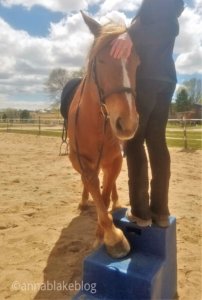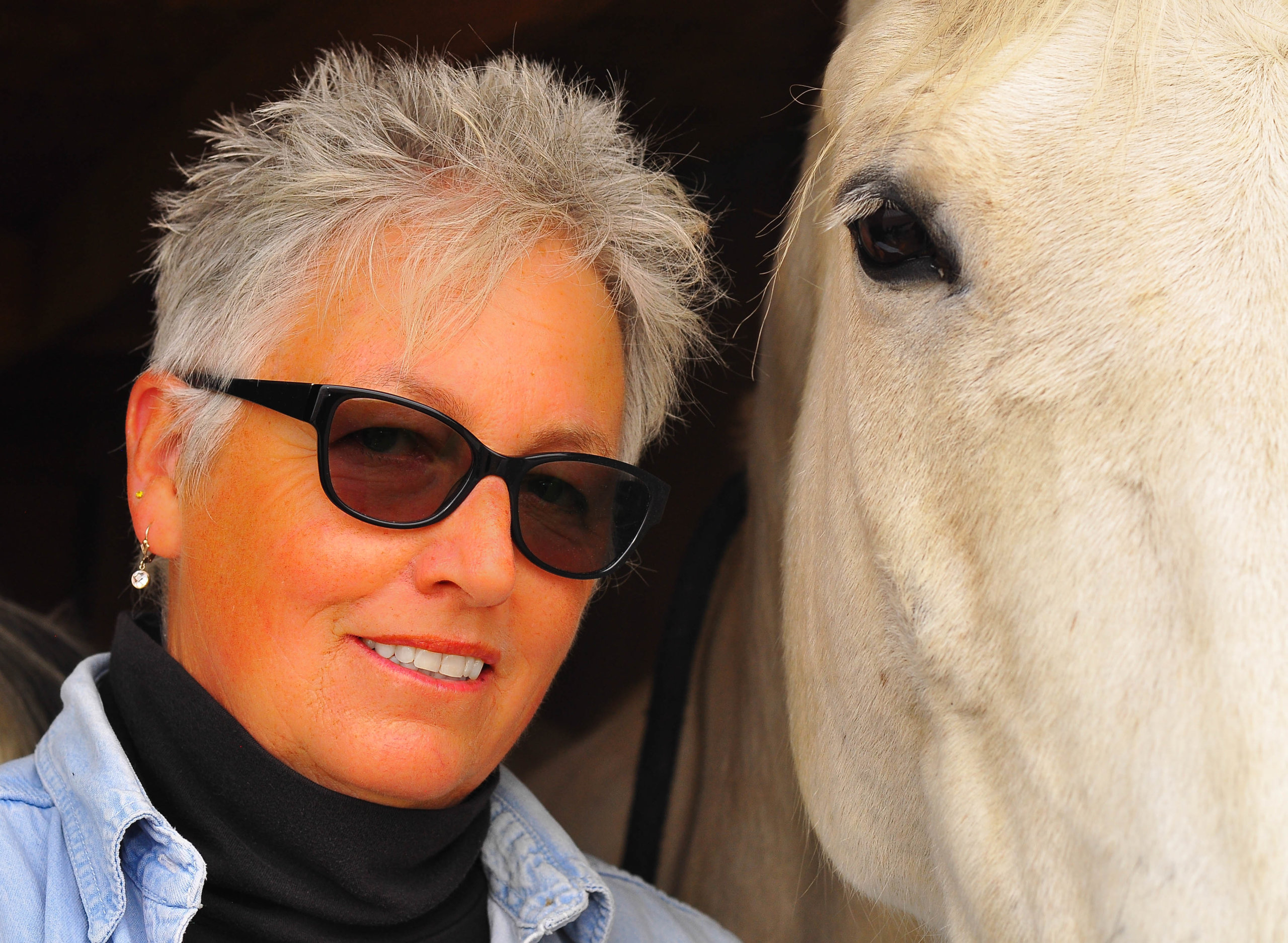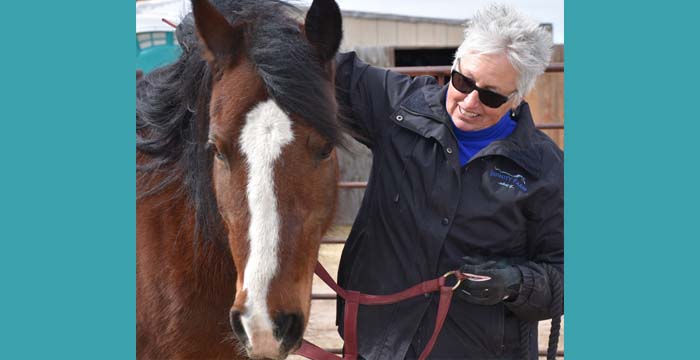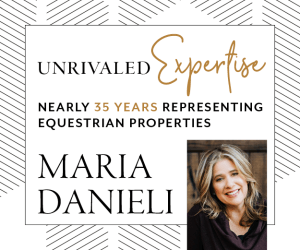The horse is relaxed and soft, volunteering his best answer to the rider’s quiet cues. Whether a competition horse or your trail horse, a sweet and successful partnership requires two-way conversations.
Find a deeper connection with your horse by listening to his calming signals—the subtle body language horses use to let us know when they feel anxiety or conflict. It’s a message that they are no threat and we don’t need to act aggressively. The signal demonstrates a self-soothing action as well as a desired behavior from us. He might look away, stretching his head down as a way of asking us to relax and go slow.
Begin by thinking of the barn as a foreign country you might visit, and decide what kind of impression you want to make. You can play the part of a loud tourist tossing coins to children or a peacemaker negotiating with heads of state. It’s up to you, but you don’t own this place. You want to be a welcome guest.
First, tidy yourself up. Horses care about our intention, as obvious to them as clothing. Settle your mind. Excuse your emotions—you won’t need them. Same with expectations and plans; horses don’t think about the future. You’re the only part of the interchange you can control, so square your shoulders and balance your thoughts. Every time you want to talk, breathe instead. Get comfortable with silence. Learn to love the peace in waiting because we teach horses to communicate by listening to them.
Warm up your senses. Tune your eyes to small details, listen to your surroundings, and slow time by noticing your breath. Be fully present. Equine senses are each more acute than ours, so we need to be sure we’re using our senses to their full potential. Communication with horses happens in the environment we share; more awareness and less brain chatter.
You’ll need to learn the language. You already know the swear words: pinned ears, a tense poll, the threat to kick. We can avoid those by listening sooner to the smaller messages. Calming signals include looking away, narrowing eyes, stretching his neck to rub his nose on his knee, or grazing when he isn’t hungry. Signals can be nuanced but there is meaning in every action.

Haltering is a good place to begin. Approach your horse by walking in an arc (a calming signal), and watch for the first tiny change you see. Maybe an ear flick or his eye goes still. Stop. Let your body demonstrate calm. Let him know that you hear
d him, that you understand that he’s feeling anxiety. Breathe, re-balance, and wait for the horse to release his jaw, for softer eyes, or a relaxed poll. Pause to let him process and release before proceeding.
Let him invite you into his space and slowly offer the halter below his muzzle. If he looks away, he needs a moment. Slow down and give him a choice. Don’t escalate; he’ll bring his head back on your next exhale.
When he swings his head toward you or drops his nose into the halter, he’s volunteering. It’s what you want; exhale and praise him. Take a step farther from his head. Does the horse release his jaw then, or maybe a small shake in his poll? More space encourages calming signals of relaxation. At first, stoic horses can be slow to respond, needing time to gain their confidence. Say “good boy” to affirm your intention. Say it to remind him who he is.
Donkeys use calming signals like horses, but a long-ear will tell you they’re smarter. There’s one calming signal that donkeys are famous for using. We call it being stubborn, but donkeys see it as not giving in to rude human (pardon me) asses. It certainly doesn’t take a donkey more time to answer; they just resent being hurried.
What would happen if humans adopted that particular donkey calming signal? What if we got stubborn about going slow? Stubborn about negotiating rather than fighting? Stubborn about taking time to listen to our good horses in their own language and then respond politely?
Published in July 2020 Issue:

Anna Blake is a horse advocate, trainer, international clinician, and award-winning author of five books. Anna believes affirmative training principals build a relaxed and forward foundation that crosses over all riding disciplines in the same way that the understanding calming signals benefits all equine communication.
Want more? Visit annablake.com to see our class schedule, online courses available on a revolving basis on Calming Signals, Affirmative Training, and more. You can purchase books or schedule a live consultation or lesson, subscribe for email delivery of her popular blog, or ask a question about the art and science of working with horses. Join us in The Barn, our online training group with video sharing, audio blogs, live-chats with Anna, and much more.






